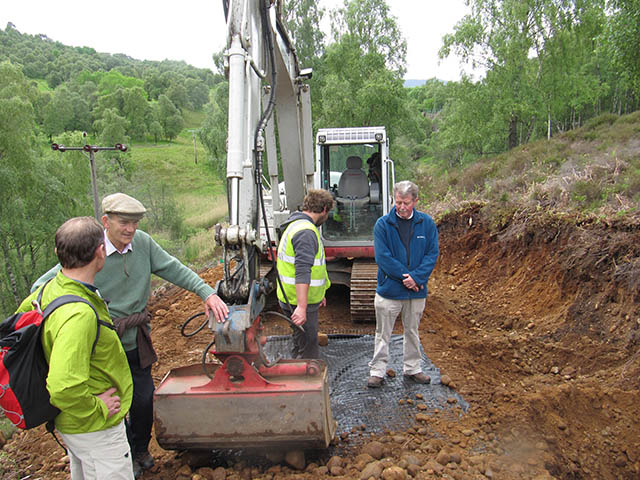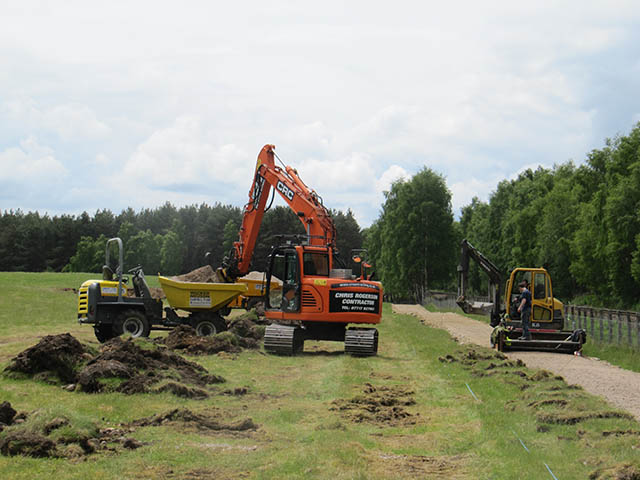
Walkers and cyclists can link up Aviemore and Kingussie thanks to the extension to the Speyside Way. The final 2.8km from Tromie Bridge to Ruthven Barracks was finished by OATS in March 2020.
That ended seven years of work carried out in partnership with the Cairngorm National Park Authority (CNPA) at a total cost of £1.3 million. On the way the project team had to negotiate with landowners, avoid conflict with rail infrastructure, seek funding and come up with innovative bridge-building solutions.
The route now runs all the way to the barracks from just south of Aviemore on the B9152, starting north of the Spey, crossing the river at Kincraig, then running south of the river to Ruthven.
The 13 stages involved a total of 15.3km of path-building. Combined with existing track and roads they give a total route of 22.5km through the varied landscape of the Upper Spey valley, with lakes, river, woods and wetlands, and views to the mountains.
The project required the first and so far only successful path order to be served in Scotland to let work go ahead. As work progressed, however, patience and compromise allowed the project to run smoothly.
Bridges and a boardwalk had to be built to cross two burns just south of Aviemore with a third at Speybank near Kincraig.
Crossing the Allt Dibheach near Aviemore required an innovative solution because of the nearby railway, steep slope, soft ground and environmental sensitivity. A specialist bridge engineer brought in devised a new system using heavy oak timbers pile-driven into the ground, which was then used further down the route on bridges and boardwalk at Speybank.
The railway’s proximity also meant working out some novel ways of working with a digger to ensure trains could pass the site safely.
The bulk of the path was project-managed by OATS as partners of CNPA, but for the final two sections, just finished, a slightly different arrangement meant CNPA project-managed with OATS providing design and management of the works in a consultancy capacity.
Most of the money for the scheme came from the Scottish Government via agencies including CNPA, Scottish Natural Heritage, Sportscotland, and Transport Scotland, with green travel charity Sustrans also contributing.





